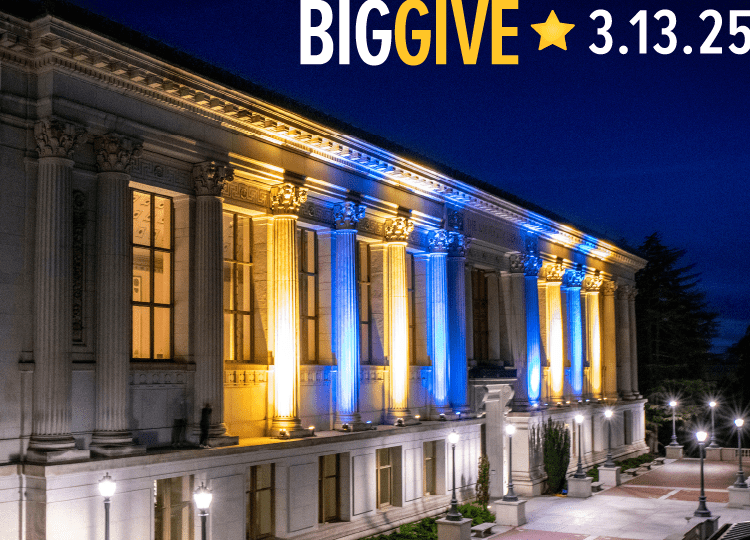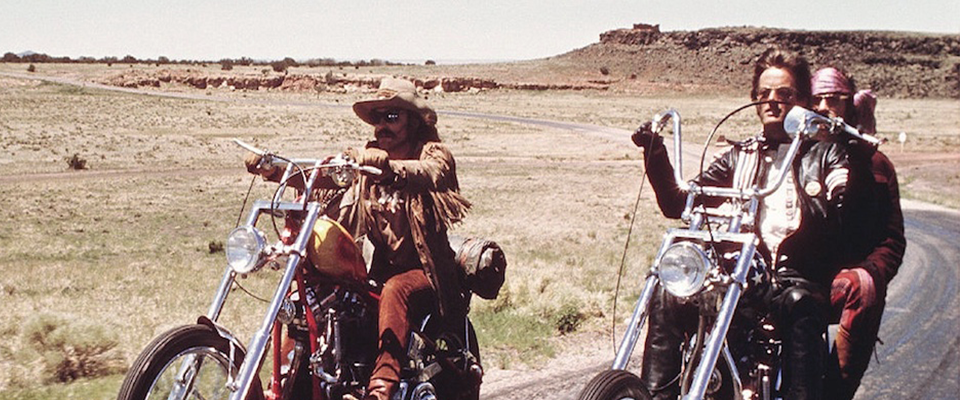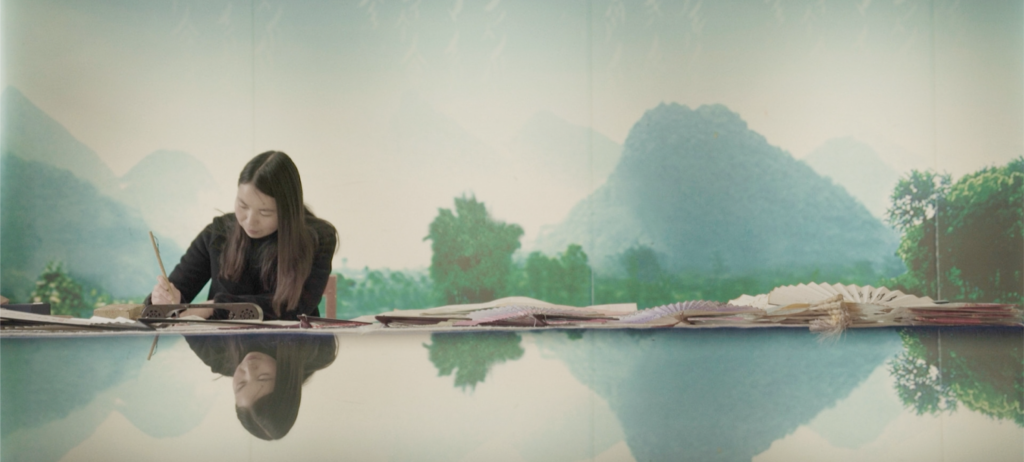The poem was originally titled Easy Rider. Westering, as it is now known, is probably the first poem Nobel Laureate in Literature Seamus Heaney wrote in Berkeley, after arriving here from Belfast in 1970 for a stint as a visiting professor in English. The poem’s original title evokes the 1969 film of the same name, starring Peter Fonda, Dennis Hopper, and Jack Nicholson. In it, the trio motorcycle east from L.A. through the nineteen-sixties America of new styles, hair lengths, music, political activity, and sexual behavior. They visit a Hispanic farmer, a New Mexico commune, and a Mardi Gras celebration in New Orleans, but they are ultimately killed by rednecks. The film celebrates freedom and the open road, with stopovers in lotus land. That is, until the hedonistic lifestyle that appears so attractive becomes clearly dangerous.
Despite the title change, something of Easy Rider—the free-wheeling spirit, sudden shifts of locale—survives in Westering. Heaney is responding to his sudden transition from Northern Ireland and the Republic where Catholics and Protestants, at war with one another, were united against sexual freedom and freedom of thought. Heaney follows his poem’s title with two words: In California. Though critics argue that Westering is about the Irish west, not California, Westering is actually his first response to Berkeley at the end of the sixties.
Seamus describes Berkeley as “a one-off adventure but a brilliant one. We loved it . . . the Bay Area was as hot politically as it was poetically . . . everything about the place was counter-cultural and anti-establishment.”
Moving from Belfast to Berkeley is as strange as going to the moon.
“I sit under Rand McNally’s / Official Map of the Moon—“ he begins; “The colour of frogskin / Its enlarged pores held / Open and one called / ’Pitiscus’ at eye level.”

Left by a previous tenant, the map reminds him that the moon is no longer inaccessible: a year earlier two easy rider Astronauts landed there. He recalls a night in Donegal, the Irish West, moonlight projecting his shadow “Neat upon the whitewash / From her bony shine, / The cobbles of the yard / Lit pale as eggs.”
That moonlit memory triggers a memory of another ride west to Donegal through the silence of an Irish Good Friday, “Past shop blinds drawn on the afternoon, / Cars stilled outside stilled churches, / Bikes tilting to a wall.”
On the anniversary of Christ’s crucifixion, everyone is in church. The sound of his motor is only “a dwindling interruption,” barely heard by those in the churches where “As clappers smacked / On a bare altar / And congregations bent / To the studded crucifix. / What nails dropped out that hour?”
On Good Friday Christ is dead. It is Ireland’s annual and most penitential event. Mass is said, but without organ music, flowers, or cloth on the altar. No bells signaling the consecration of the Host, when the priest turns unleavened bread and wine into Christ’s body and blood. On Good Friday, consecration cannot happen. The priest alone receives the sacrament, consecrated the day before. The focus is on the dead or dying Christ nailed to the cross. “What nails dropped out that hour?” the poem asks, when sinners repent at this reminder of Christ’s suffering.
Seamus drives past the churches, as roads unreel beneath his car—the “on the road” theme from Easy Rider. But this Rider is not at ease. He thinks about the crucifixion as the sky darkens. Dying light falls like streaks made by a fisherman’s casts. But the note “In California,” very much part of the poem, brings us back to the present. This time, Seamus sees Pitiscus as “the moon’s stigmata.” The lunar crater is the moon’s wound, like those on the crucified Christ’s hands, wrists and feet.
In the last stanza, Seamus is six thousand miles away from Ireland and the Irish Good Fridays he remembers. In Berkeley, he imagines “untroubled dust,” the guilt-free hedonists of this new place, but also the “loosening gravity” as Christ’s body, its weight sagging, hangs on the cross by the nails piercing his hands and feet. He is citing, or if you prefer, “channeling“ John Donne’s, “Good Friday, 1613. Riding Westward,” another shadowy but real presence in Westering. Donne describes traveling into Wales on Good Friday, while his “soul bends toward the East,” where Christ, the Sun, died, “And by that setting endless day beget” and redeeming all humanity.”

In 1970-71, most UC faculty lived in North Berkeley’s hills. South Berkeley was for students and recently arrived faculty. The Heaneys settled six blocks south of Campus, at 2624 Carleton Street. Every day Seamus walked along Telegraph Avenue (vendors, Black Panthers, incense, Kama Sutra, tie-dye, joss sticks) and through Sproul Plaza’s imperatives: BOYCOTT Coors Beer, lettuce, grapes, BOYCOTT Bank of America. In Stepping Stones (2008), a series of interviews with Dennis O’Driscoll, he describes Berkeley as “a one-off adventure but a brilliant one. We loved it . . . the Bay Area was as hot politically as it was poetically . . . everything about the place was counter-cultural and anti-establishment. Hare Krishna and hard rockers singing from the one hymn sheet . . .This was the time . . . of the loose garment and the long hair; of pot in the air and sex on the waterbed . . . the other side of the draft card and the water cannon.” Seamus was fascinated by the “intellectual distinction” of his Berkeley colleagues, “the nurture that came from new friendships,” and the “vivid environment.” Berkeley, he said, changed rather than challenged him: “I was taller and freer in myself at the end of the year than at the beginning . . . I couldn’t entirely expel the Irish Catholic in me but he became a bit less uptight, and came home with a leather hat on his head”(Stepping Stones 136-8).
He also came home with an increased sense of himself as an Irish poet. In Berkeley he met Tom Flanagan, professor of English, who specialized in nineteenth and twentieth century Irish writers. In Stepping Stones he describes Tom as “Hibernocentric.” For him, Ireland was “the normative place—omphalos or navel of the world—as Delphi was for the ancient Greeks and Dublin for James Joyce. Seamus suggests that Tom had pushed him beyond the “Anglocentric” literary training he had received in Ireland to recognize Ireland as his emotional and intellectual center, his vantage point for viewing the world. “Westering” ends with Ireland as the flawed but “normative” place, literally carrying out Tom Flanagan’s advice to be “hibernocentric.” Ireland, even during the Troubles, is the source of his poetic strength and authority.
On a Wheeler Hall balcony, Heaney experienced what he calls an epiphany, “a case of being overwhelmed by the work of mortal men” as he looked at “light-drenched” San Francisco.
“. . . the green trace of trees and gardens in between . . . I had this vision of . . . Humanist joy? Awe? A tremendous sense of what human beings had achieved on earth.”— Stepping Stones, 32
Robert Tracy is Emeritus Professor of English/Celtic Studies at UC Berkeley. He worked alongside Heaney during the poet’s Berkeley year.






















